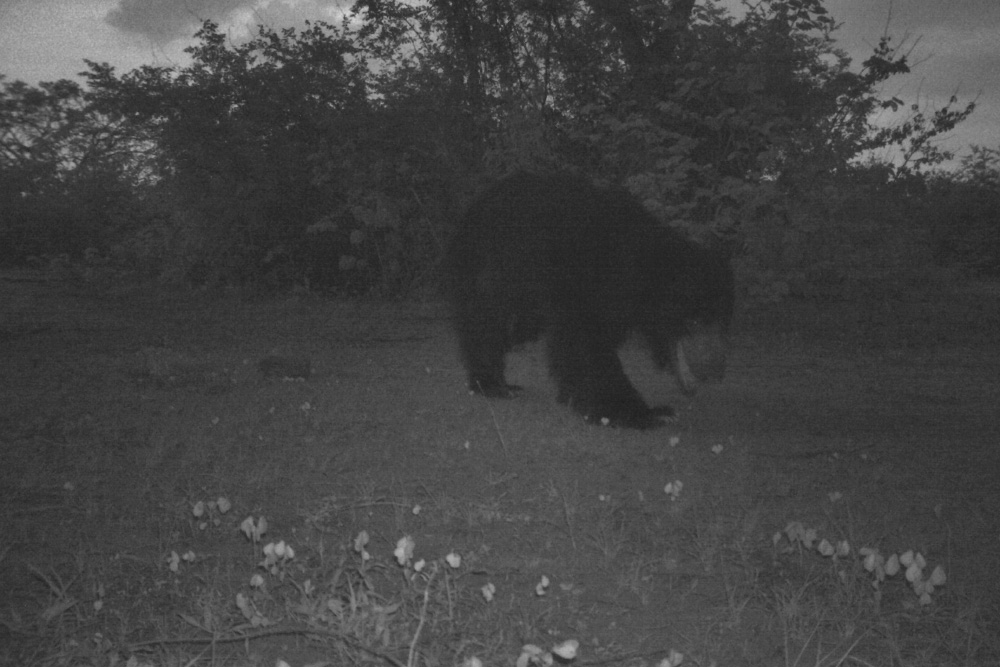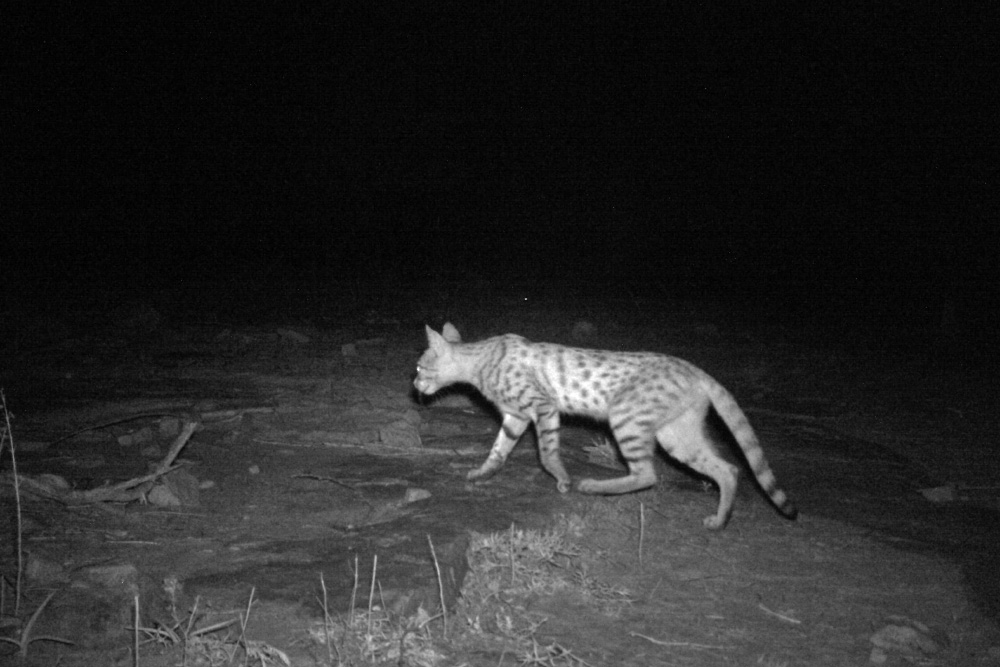A first of its kind, and Uttar Pradesh’s first Protected Area dedicated to Sloth Bear may come in Mirzapur Forest Division. The proposal for 408 sq.km. Conservation Reserve is backed by the first ever wildlife inventory using camera trap survey conducted in three forest ranges- Marihan, Sukrit and Chunar under Mirzapur Forest Division, Uttar Pradesh. The report titled “Wildlife Inventory and Proposal for Sloth Bear Conservation Reserve” published in July 2019 is authored by Vindhyan Ecology and Natural History Foundation (VENHF) and Divisional Forest Officer-Mirzapur Forest Division, Government of Uttar Pradesh. The study for which researchers raised funds using crowdfunding last year has also received support from conservation organizations like the Wildlife Trust of India-David Shepherd Wildlife Foundation and Earth Matters Foundation.
The report is based on secondary information available with the Forest Division, study on sloth bear distribution in Mirzapur (2017) and a wildlife inventory conducted in May-July 2018, using 15 night camera traps deployed at 50 locations selected randomly covering different habitat types and locations on the basis of previous records and animal behaviour. This was also a first ever camera trap survey conducted in this forest division.
The Schedule I (WPA, 1972) animals recorded from these forest ranges are Sloth Bear (Melursus ursinus), Leopard (Panthera pardus), Asiatic Wild Cat (Felis sylvestris ornata), Rusty Spotted Cat (Prionailurus rubiginosus), Indian Wolf (Canis lupus), Indian Gazelle (Gazella bennettii), Blackbuck (Antilope cervicapra), Peafowl (Pavo cristatus), Bengal Monitor (Varanus bengalensis) and Mugger Crocodile (Crocodylus palustris) etc.
Other important species recorded here are Striped Hyena (Hyaena hyaena), Jungle Cat (Felis v chaus), Red Fox (Vulpes vulpes), Golden Jackal (Canis aureus), Sambar Deer (Rusa unicolor), Spotted Deer (Axis axis), Ruddy Mongoose (Herpestes smithii), Grey Mongoose (Herpes tesedwardsii), Palm Civet (Paradoxurus hemaphroditus), Small Indian Civet (Viverricula indica), Bluebull (Boselaphus tragocamelus), Wild Boar (Sus scrofa), Indian Crested Porcupine (Hystrix indica), Indian Hare (Lepus nigricollis), Five-striped Palm Squirrel (Funambulus pennantii), Hanuman Langur (Semnopithecus entellus), Rhesus Macaque (Macaca mulatta), Painted Spur Fowl (Galloperdix lunulata), Red Jungle Fowl (Gallus gallus) and many other birds.
Total 29 wildlife species were recorded during this study including 10 species listed and protected under Schedule I of the Wildlife (Protection) Act, 1972. 11 species of animals found during this study were not previously recorded in Mirzapur forest division. Asiatic Wild Cat (Sch-I, WPA, 1972) was recorded for the first time in Uttar Pradesh.
Proposal for Conservation Reserve
The study report cum proposal has laid emphasis on the importance of the landscape as catchment of several rivers and dams as well as important stepping stone forest and corridor between other protected areas The concerned forest ranges Marihan, Sukrit and Chunar connects Eastern Kaimoor landscape (Ranipur WLS in U.P. and Son Gharial WLS, Sanjay Dubri Tiger Reserve and Bagdhara WLS in M.P.) with Western Kaimoor landscape (Chandraprabha WLS of U.P. and Kaimur WLS of Bihar).
It has also listed several waterfalls and other places with exemplary natural beauty which has the potential for developing low footprint ecotourism and boosting local employment opportunities. The report also highlights the threats to wildlife and other resources in this region which can be checked once it is granted the status of conservation reserve.
Some of the threats that are causing damage are land use and land cover change, hunting/poaching, deforestation, encroachment of forests and watersheds, overgrazing, invasion by exotic species, forest fires, mining etc.
The report has been acknowledged by some of the leading wildlife conservationists which includes Mike Pandey (Ambassador-Govt. Of U.P., Wildlife & Environment), Prerna Bindra (Writer & Former Member-National Board for Wildlife), Dr H.S. Bargali and Dr Nishith Dharaiya (IUCN Co-Chair, Sloth Bear Expert Team), Dr Faiyaz Khudsar (Scientist In-Charge, Yamuna Biodiversity Park) and Ananda Banerjee (Conservationist & Author). Their detailed impressions are included in the report.
The report proposes the conservation reserve mainly in the areas already recorded as reserve forest under territorial jurisdiction of Mirzapur Forest Division and villages in and around it. It has recommended against any resettlement and rehabilitation and has advocated for involvement of people dependent on forests for better management of forests and ensuring the rights of people dependent on forests for livelihood are least affected.



 CI is a non-profit, non-commercial portal that aims to facilitate wildlife and nature conservation by providing reliable information and the tools needed to campaign effectively.
CI is a non-profit, non-commercial portal that aims to facilitate wildlife and nature conservation by providing reliable information and the tools needed to campaign effectively.


